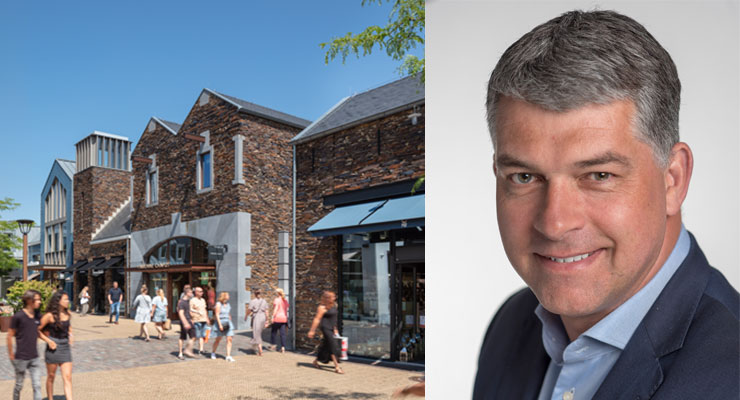ACROSS: The year 2022 in the outlet industry: Where do you see the most significant developments and changes?
Otto Ambagtsheer: At VIA Outlets we have seen a continuation of the same trends as in 2021, with significantly higher spend per visitor compared to pre-pandemic levels. Our visitors are currently coming to the outlets with a purpose and a clear idea of what they want, they don’t just come for an afternoon or evening of window shopping anymore. More encouragingly, the easing of Covid restrictions has given people across Europe the opportunity to travel again, and that is helping with our visitor numbers.
The other major trend is the increasing importance given to sustainability, especially as energy prices continue to rise. The impact of this is seen not only from a brand offer point of view – with new, more ESG-focused brands embracing outlets – but also in the way we operate our centers in a more sustainable way, be that through construction, energy consumption, or waste management. This extends to ensuring visitors are offered sustainable solutions such as EV charging points and a seamless experience between online and offline.
ACROSS: In relation to your company and your projects: What are the most significant innovations, developments, and changes?
Ambagtsheer: We at VIA Outlets continue to redefine the outlet shopping experience in 2022. It’s an exciting time for our current and future developments, which have hit some key milestones in recent times. Sevilla Fashion Outlet achieved a major coup, receiving a €17.5 million investment to develop 17 extra units, increasing GLA by 20%. The expansion project has achieved a BREEAM “Excellent” rating in the ‘New Construction’ category, having placed eco-efficient building criteria with low environmental impact at the core of its design.
We have also started the construction of Oslo Fashion Outlet’s multideck carpark and the new standalone restaurant in Zweibrucken Fashion Outlet, which will be operated by Five Guys, the first in VIA’s portfolio. As with all new projects, sustainability is at the forefront of this building. On the sustainability side, we are focusing on this area more than ever, with initiatives including energy saving, waste management, renewable energy. These are enabling us not only to measure and achieve a longer life cycle with lower maintenance costs, but also to lay the foundations for a model truly committed to the fight against climate change. In November 2021, we successfully placed the issuance of €600 million of senior unsecured green bonds which attracted 190 orders from institutional investors, pioneering the first-ever green bond issued by an outlet owner-operator in Europe. Following the launch of re.love last-year, we have continued this initiative with the successful opening of premium second hand stores in our locations, such as “The Next Closet” in Batavia Stad Fashion Outlet. “The Next Closet” is the leading online platform for curated secondhand designer fashion in the Benelux.
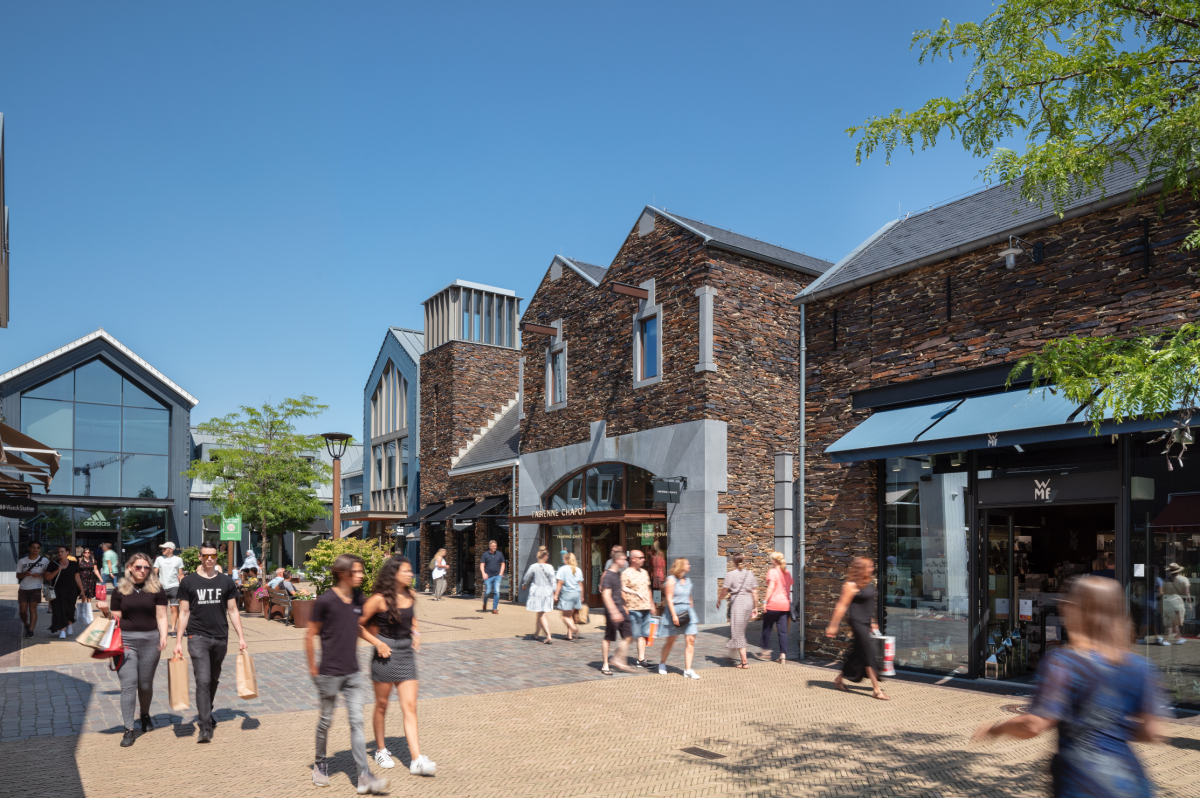
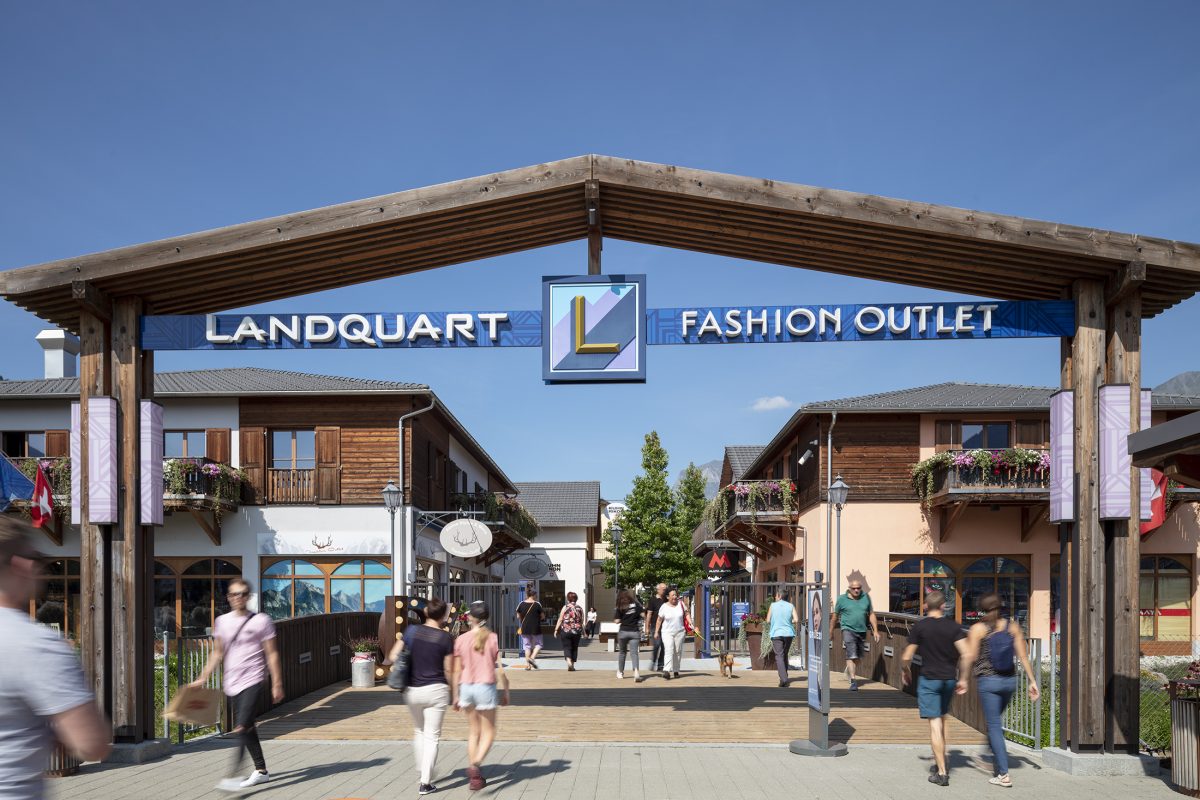
ACROSS: Do the “big problem issues” such as inflation, energy prices, etc. have an impact on the sales and customer frequencies of your centers? How will these issues affect the outlet sector in the future?
Ambagtsheer: One of the outlet industry’s strengths is that it has a stronger value proposition than full price retail in times as these, becoming even more interesting to consumers as there’s always a minimum 30% discount to full prices. We have seen in past recessions/downturns that the outlet industry benefits from these situations and is more resilient than full price retail. But due to the current situation we do foresee that governments will bring in new rules. We’re already seeing this effect in some markets where new rules are being implemented in terms of energy saving, such as a ‘closed door’ policy, limits on air conditioning temperatures and switching off window lights between certain hours. All of this will not only have an impact on the customer journey, but will also impact our capture rate in stores.
Also, we expect that ‘day-out’ shopping will be changed by ‘shopping with purpose’, so instead of going on an unprepared shopping trip, consumers want to be better informed in advance on the products they can expect to find and the availability of them to avoid wasted journeys. And like everyone, we are seeing the effect of inflation and rising energy prices in our development costs. Prices and timing of delivery of materials for our projects is highly impacted, resulting in later opening dates and higher costs.
ACROSS: What “need for adjustment or development” do you see coming for the outlet sector?
Ambagtsheer: Guests will become more conscious when travelling to outlet centers as they are predominantly located on the outskirts of big cities. They are considering alternative journey options – such as public transport, shuttle buses, and EV charger availability – and these are services we are considering for both existing schemes and future projects. In parallel, there will be a greater need to have a full omnichannel environment – how can online be integrated into the traditional offline outlet industry without cannibalizing footfall to the centers?
ACROSS: Regarding tourism, are tourists coming back to your centers? In which of your centers do tourists play a particularly important role? Does the outlet business in general need the factor “tourism”?
Ambagtsheer: The post-pandemic return of tourism is clearly visible in our centers. In certain markets, some nationalities are already outperforming 2019 visitor numbers. Another visible impact is the fact that UK citizens can now shop tax-free in Europe. This is part of a wider shift in shopping tourism from the UK to Europe. In terms of non-EU, it’s the Middle East & America’s who are currently the main drivers in the VIA Outlets portfolio. The strong non-EU tourism from Asia which was there pre-pandemic has yet to return, and Russian shoppers are also absent for obvious reasons. The return of tourists is to be welcomed as they still create the cherry on the cake. Tourists remain generally higher spenders, with an average spend per visit up to six times higher than domestic guests.
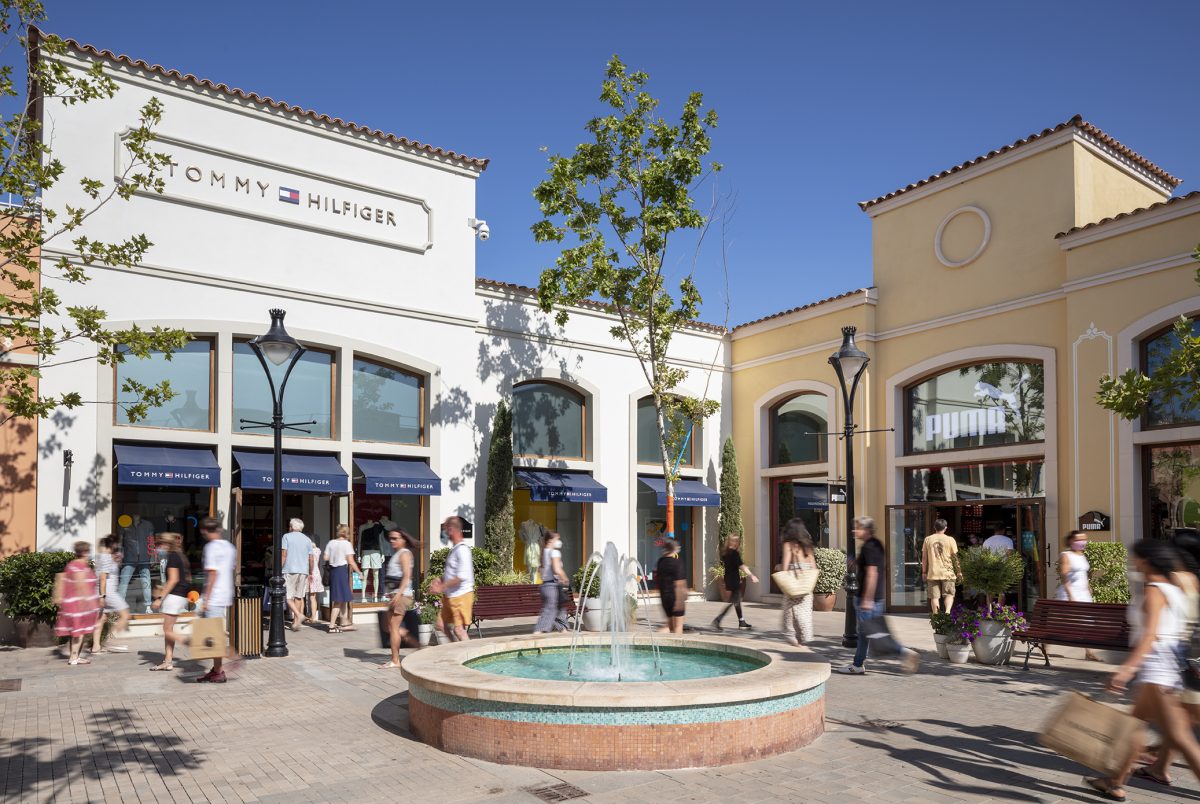
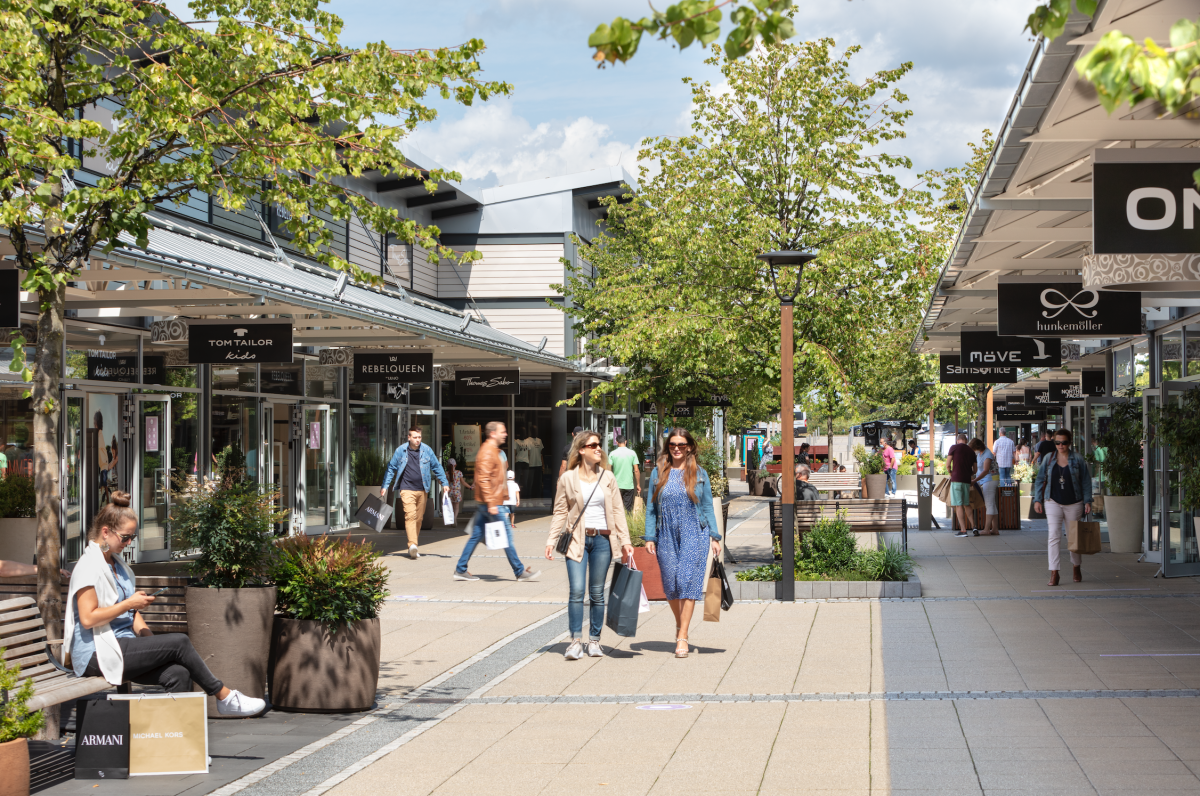
ACROSS: Gastronomy: What significance does it have for the outlet sector? Which concepts will be successful in 2022?
Ambagtsheer: At VIA Outlets we’re constantly looking for ways to surprise and delight visitors at our centers. One way we do that is through a varied F&B offer including regularly-updated range of food trucks catering to specific trends, complementing fixed food and beverage operators. Consumers’ increasing climate awareness is as evident with food as fashion, with guests being more conscious of what goes on their plates and asking questions about how food is produced, where the ingredients come from and what happens to food surplus. Alongside the big chains, a range of smaller “beautiful local” operators are entering the market to cater to more niche customer preferences such as vegan diets and healthy juices.
ACROSS: Retailers: Who is currently successful? Who less so? Are there any product ranges that can be described as “winners” or “losers” in 2022?
Ambagtsheer: Pre-loved fashion is a new upcoming trend. Within the VIA Outlets portfolio, we trailed last year the re.love concept in some markets and have continued this year, such as with “The Next Closet” in Batavia Stad. “The Next Closet” is the leading online platform for curated secondhand designer fashion in the Benelux. We also do see that some brands are still suffering from stock issues due to temporary lock-downs of factories during the pandemic, predominately those producing in Asia. At VIA Outlets we also believe in offering a strong “beautiful local” brand offer in the overall brand mix. These ‘local’ brands are always doing really well, as they are very relevant and in high demand from the domestic community.
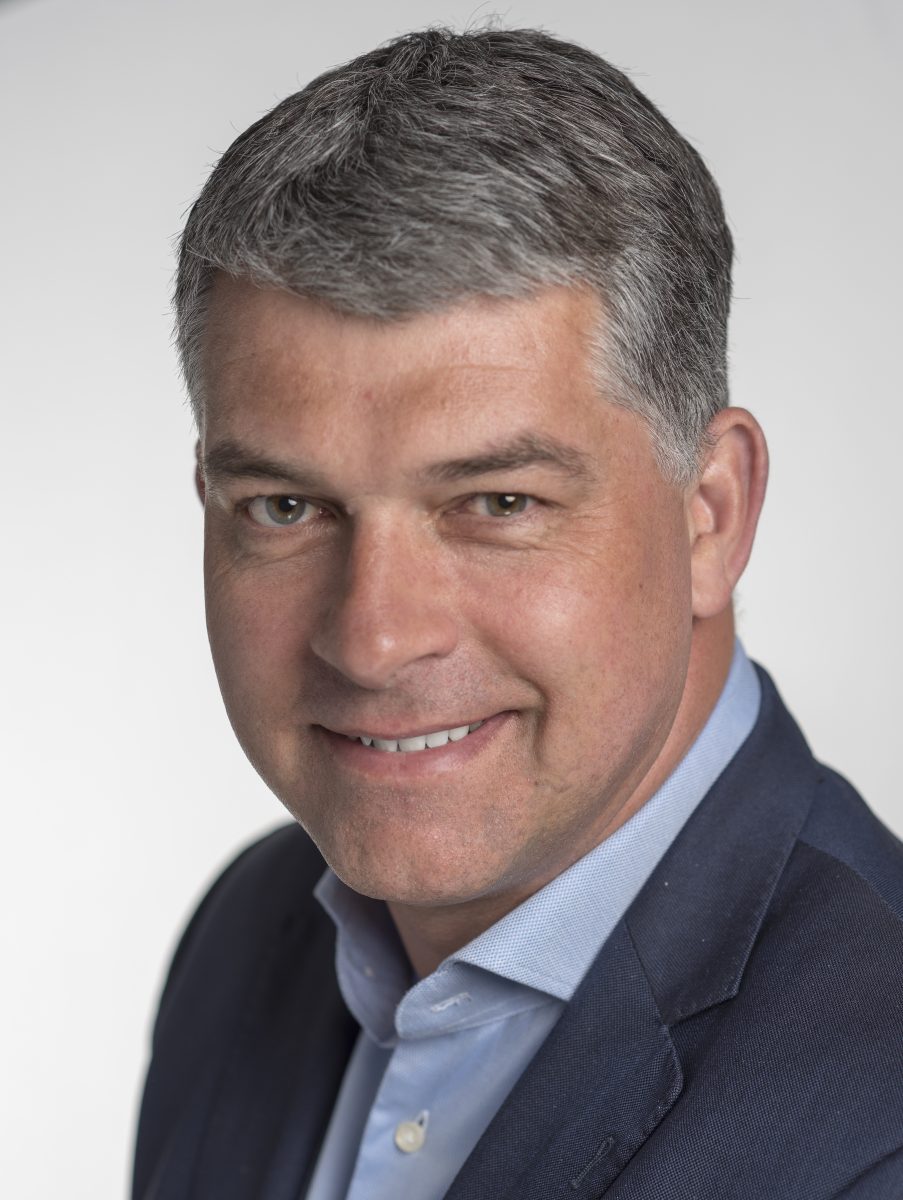
Otto Ambagtsheer is CEO of Via Outlets. The company was founded in 2014 to acquire existing outlet centres across Europe. VIA Outlets presently consists of 11 assets spread across Europe, offering over 1,100 stores across 267,000 sq. m GLA.
ACROSS: To what extent do the important “retail themes” of “regionality” and “sustainability” play a role among outlet tenants? Are there new brands that particularly cover these areas?
Ambagtsheer: Sustainability has to be a key element of every brand’s value offer to successfully reach a modern customer base. That needs to be reflected not only in a brand’s values and behavior, but also how the centers are built and operated. Regionality is in some ways an extension of sustainability, with consumers embracing brands that benefit their local community. Therefore, having a “beautiful local” offer in the overall brand mix is a key focus in the VIA Outlets portfolio and we do see that these brands are trading really well.
ACROSS: Rental levels: Are there any changes? Are rents under pressure? What needs to be done to maintain rent levels. Strategies for 2022?
Ambagtsheer: The rental model at VIA Outlets has returned to its pre-pandemic basis. During COVID we had to be more flexible to help our brand partners, but the market now operates as before. The value offer of outlets means it continues to be in high demand from operators, and this continues to support rents.
ACROSS: Are there any outlet centers in the pipeline in Europe? Do we still need new centers? And what actually makes a center a “successful center”? What are the critical success factors in 2022?
Ambagtsheer: As part of VIA Outlets’ inorganic growth strategy, we are always looking for opportunities in the market – be it acquisitions of existing outlets or ground-up developments – and yes, there are still opportunities or white spots where the presence of an outlet could really work. It all depends on our “3 Cs” – Competition, Catchment and Connectivity – which we apply to assess every opportunity.
ACROSS: ESG – the buzzword of the industry. What is actually happening in this regard at your centers?
Ambagtsheer: At VIA Outlets, we know our guests and brand partners care about the planet. VIA Outlets strongly believes that being a successful owner and operator should be reinforced by sustainability. Our “Beyond Sustainable” brand is based on four pillars – Sustainable Buildings, Resilient Communities, Conscious Consumers and Engaged Stakeholders – that underpin this vision. For us, this means finding a balance between promoting the interests of our stakeholders and protecting the environment.
As the fashion outlet destination industry has refined previous targets using the CRREM tool as the benchmarking guidance, VIA Outlets has set longer-term targets to consider climate-related transition risks in the portfolio. Some of the practices VIA Outlets has implemented have targeted saving energy, such as the renewal of air conditioning, as well as the replacement of lighting systems with LED technology. In addition to this, VIA Outlets’ Circular Economy initiatives were applied utilizing the principle of waste hierarchy during 2021, resulting in 87% of waste diverted from landfill as part of the long-term strategy, with sustainable goals in line with the 2030 Agenda for Sustainable Development to reduce greenhouse emissions.
In the first half of 2022, we, at VIA Outlets, undertook a number of initiatives in support of refugees from the conflict between Russia and the Ukraine, providing clothing, consumables, sleeping items and other essentials. Within VIA’s markets, the cities of Wroclaw and Prague have seen a significant influx of refugees since the start of the war and Wroclaw Fashion Outlet and Fashion Arena Prague Outlet saw the greatest impact.
ACROSS: Has anything changed post-Corona in terms of customer marketing? How do you communicate with your customers in 2022?
Ambagtsheer: There’s been even more emphasis on personal, tailored messaging with increased use of one-to-one marketing channels, allowing closer contact with the customers. VIA Outlets is committed to sustainability, and we see that across all the asset portfolio, it is very important for us to highlight that in our communications, it’s a long-term commitment within our ESG strategy not just a green-washing campaign.
ACROSS: Outlet business and online – friend or foe?
Ambagtsheer: Definitely friend, as we are all digitally connected and younger generations (Millennials and Generation Zers) are real digital natives. We should not ignore online. Covid taught us that our guests are also looking for that online experience. At our centers we had successful trials using WhatsApp shopping, Instagram shopping, and virtual shopping. This shows that everything we do should have a full omni-channel experience. At VIA, we take customer feedback seriously and we are investigating how the outlet landscape should be transformed to be able to meet these needs so that we at VIA Outlets can continue to redefine the outlet shopping experience.

